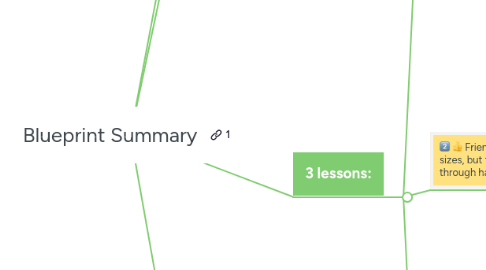
1. 1-Sentence-Summary:
1.1. Blueprint helps you have hope for the goodness of the human race by revealing our biologically wired social tendencies that help us survive and thrive by working together.
2. Favorite quote from the author:
2.1. "The arc of our evolutionary history is long. But it bends towards goodness." - Nicholas A. Christakis
3. 3 lessons:
3.1. Our species does so well because love and monogamy are part of our social blueprint.
3.1.1. In Mozambique, Africa, the Tsonga people don’t kiss. They think it’s strange that two people would share saliva and germs.
3.1.2. An oddity like this raises the question, what characteristics are common in sexual relationships for every culture?
3.1.2.1. Unsurprisingly, the answer is love.
3.1.3. Scientifically, we can define love as the deep emotional connection between partners that surpass sexual desires.
3.1.4. In evolutionary terms, the idea that couples would love each other appears to be an accident.
3.1.4.1. The thinking behind this is that what began as affection only for offspring developed into a love for our companions as well.
3.1.4.1.1. This helped ensure survival by keeping families together throughout pregnancy and raising children.
3.1.5. It’s not uncommon for this to happen in other species’ evolutionary history, either.
3.1.5.1. Some speculate that birds, for example, developed feathers to stay warm and only afterward learned to fly.
3.1.6. Monogamy is also common today, although this advancement is only recent in homo sapiens history.
3.1.6.1. It’s advantageous to society because it allows each man to have a spouse.
3.1.6.2. Other systems, like polygyny, were risky because they left some men alone.
3.1.6.2.1. In this state, they don’t care as much for the future and are more likely to participate in theft, violence, and rape.
3.2. Friendships come in different shapes and sizes, but they make it easier for us to get through hard times.
3.2.1. At the end of 2015, a 15-year-old by the name of Zavien Dobson was murdered while sitting on his porch.
3.2.1.1. But his heroic actions to jump in the way of gunfire from a nearby car saved the lives of his friends.
3.2.1.2. When the author learned of this, he wondered why we love our friends so deeply.
3.2.2. There is evidence that friendship is common across almost all societies.
3.2.2.1. And most of these cultures even see it in the same light of trust, mutual aid, and affection.
3.2.2.2. We also often see individuals being vulnerable in front of their peers.
3.2.3. Some parts of the world are slightly different in their view of this part of the human blueprint, however
3.2.3.1. People in the US think of these relationships in terms of socializing and exchanging personal information.
3.2.3.2. Physical contact like holding hands, on the other hand, is a token of friendship in places like Saudi Arabia.
3.2.3.2.1. This is why it seemed strange to Americans when President George W. Bush held hands with Crown Prince Abdullah of Saudi Arabia.
3.2.3.2.2. But people from the prince’s native land instead saw it as a normal sign of friendship.
3.2.4. Again going back to evolution, it makes perfect sense that we would develop these types of relationships.
3.2.4.1. Our ancient ancestors had to work to survive amid threats like illness, injury, lack of food, or poor weather.
3.2.4.2. It was in their best interest to congregate in groups where they knew they could trust others to help without expectation of a reward.
3.2.4.3. In other words, your chances of survival went up if you had good friends, and the same is true today.
3.3. Mankind has flourished on Earth even amid its challenges because of our ability to evolve and create cultures.
3.3.1. Looking at culture from the lens of human development, it’s simply the information that people pass to each other that influences behavior.
3.3.2. Through natural selection, we have genes that allow us to develop societies.
3.3.2.1. One example of this is the length of our lives, which gives us enough opportunities to pass information to the next generation.
3.3.2.2. The need we have to conform and mimic one another is another development that helps us perpetuate important survival mechanisms.
3.3.3. Even ideas themselves go through a sort of natural selection.
3.3.3.1. We only pass down the best solutions that keep us the healthiest and happiest.
3.3.3.2. Like genetic mutations and survival of the fittest, the weaker habits get left behind in favor of more useful ones.
3.3.4. Although this is fascinating, it doesn’t identify the reason why civilization is so vital.
3.3.4.1. Think about Europeans who ventured out into the world throughout history.
3.3.4.1.1. The dangers of not knowing the environment could easily get them killed.
3.3.4.1.2. If they instead looked to the local cultures for information about how to survive, on the other hand, they could make it even in harsh conditions.
